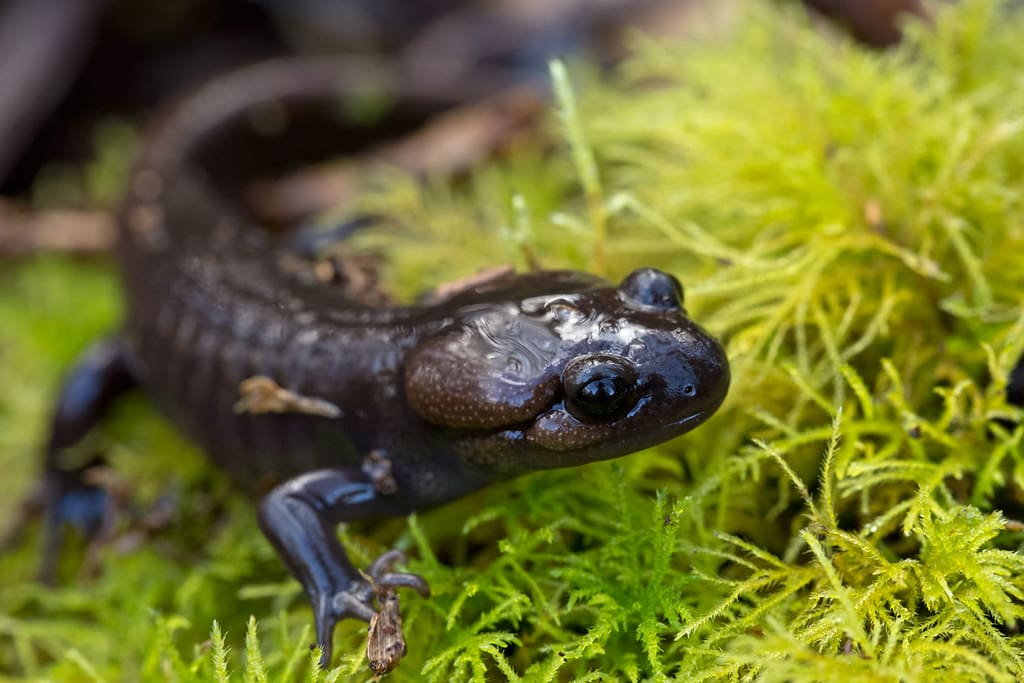| Washington State is home to many unique species and diverse habitats. In fact, nine different terrestrial ecoregions have been delineated in Washington, and that doesn’t even include marine ecosystem diversity. We’re lucky enough to find estuaries, grasslands, rivers, streams, bogs, sand dunes, coastal beaches, woodlands, and more throughout our region. Washington has most of the major ecosystem types found in the western United States but also contains two completely distinctive: Olympic rainforest and channeled scablands. Although other parts of the U.S. have diverse land ecoregions as well, the Puget Sound, also known as the Salish Sea, has a tremendous amount of aquatic diversity too. Where else could you find mountain lions, diminutive lichens, and sea anemones? |

| Some special creatures are only found in Washington. Two salamanders, one species of fish, and one mammal are only endemic to the Pacific Northwest. In the past few years, 69 new species of millipedes have been discovered here: that’s a 64% increase in millipede diversity. The basalt daisy is a narrow endemic plant in Washington. Its range extends to only about 20 square miles (52 square kilometers) globally! According to the Washington State Shore Zone Inventory User’s Manual, Washington provides habitat to 3,100 vascular plants, thousands of mosses, lichens, liverworts and fungi, 140 mammals, 470 freshwater and marine fishes, 341 birds, 25 amphibians, 21 reptiles, and about 20,000 invertebrates. New species are being recorded all the time. |
| Mount Rainier, originally known by local tribes as Mount Taquoma, is the highest volcanic peak in the contiguous United States. Other than looking like the perfect postcard, it has the largest volcanic glacier cave system and alpine glacial system outside of Alaska. Mount Rainier National Park is not only appreciated during winter snow. In spring, thousands of wildflowers bloom, blessing the landscape with beautiful colors contrasting the warm sunset. Evidence shows Indigenous connections to Mount Taquoma dated back over 9,000 years ago. The mountain remains culturally significant to the Nisqually, Puyallup, Squaxin Island, Muckleshoot, Yakama, and Cowlitz tribes today. |
 |
| This exceptional biodiversity leads to extraordinary human communities! The natural environment brings our communities together, whether it be through recreational activities, outdoor learning experiences, or to appreciate and advocate for Indigenous stewardship. However, habitat degradation, conversion, fragmentation, pollution, and climate change continue to threaten our biodiversity. That’s why SHADOW Lake Nature Preserve works to ensure the vital wildlife habitats and diverse wetlands surrounding Shadow Lake are protected, connected, and cared for by all in our community. We hope that the admiration for the rare flora and fauna inspires you to protect them as it inspires us! |


Recent Comments